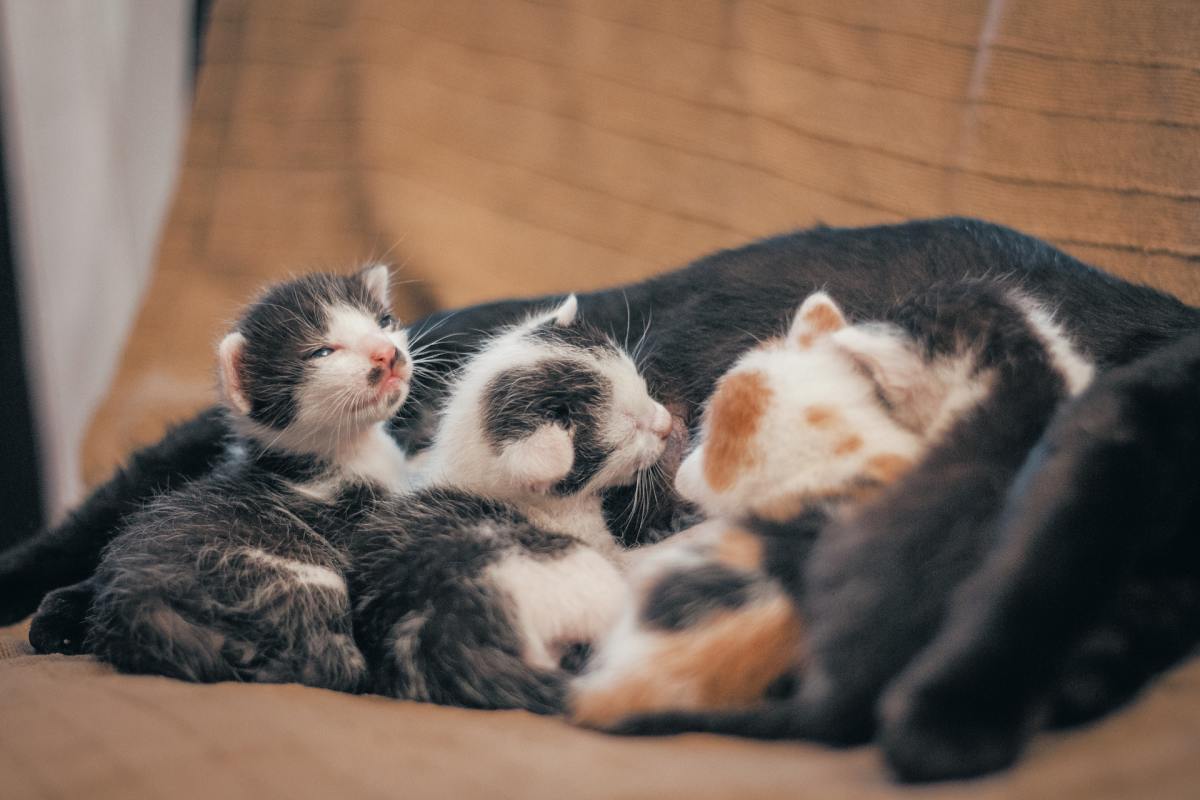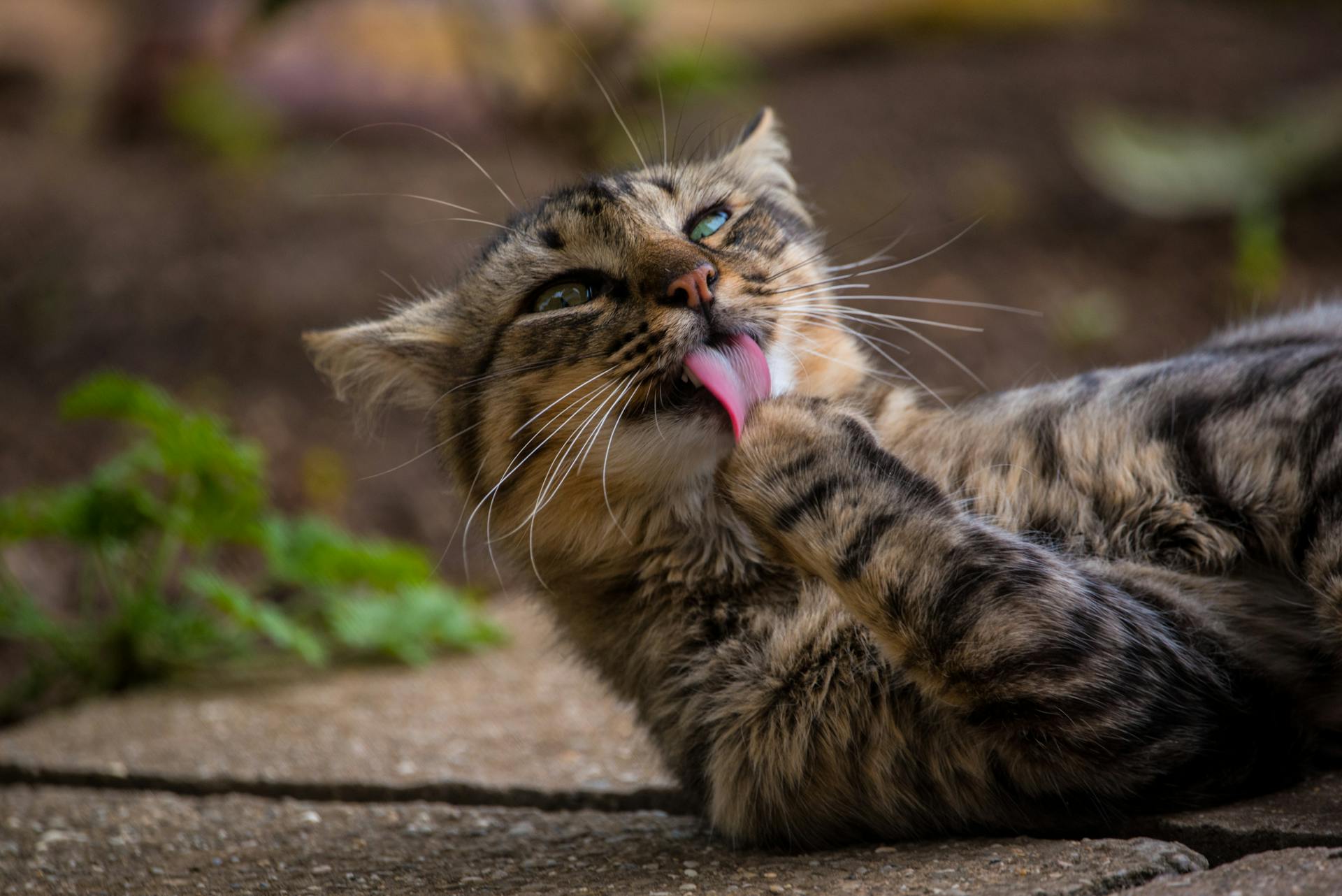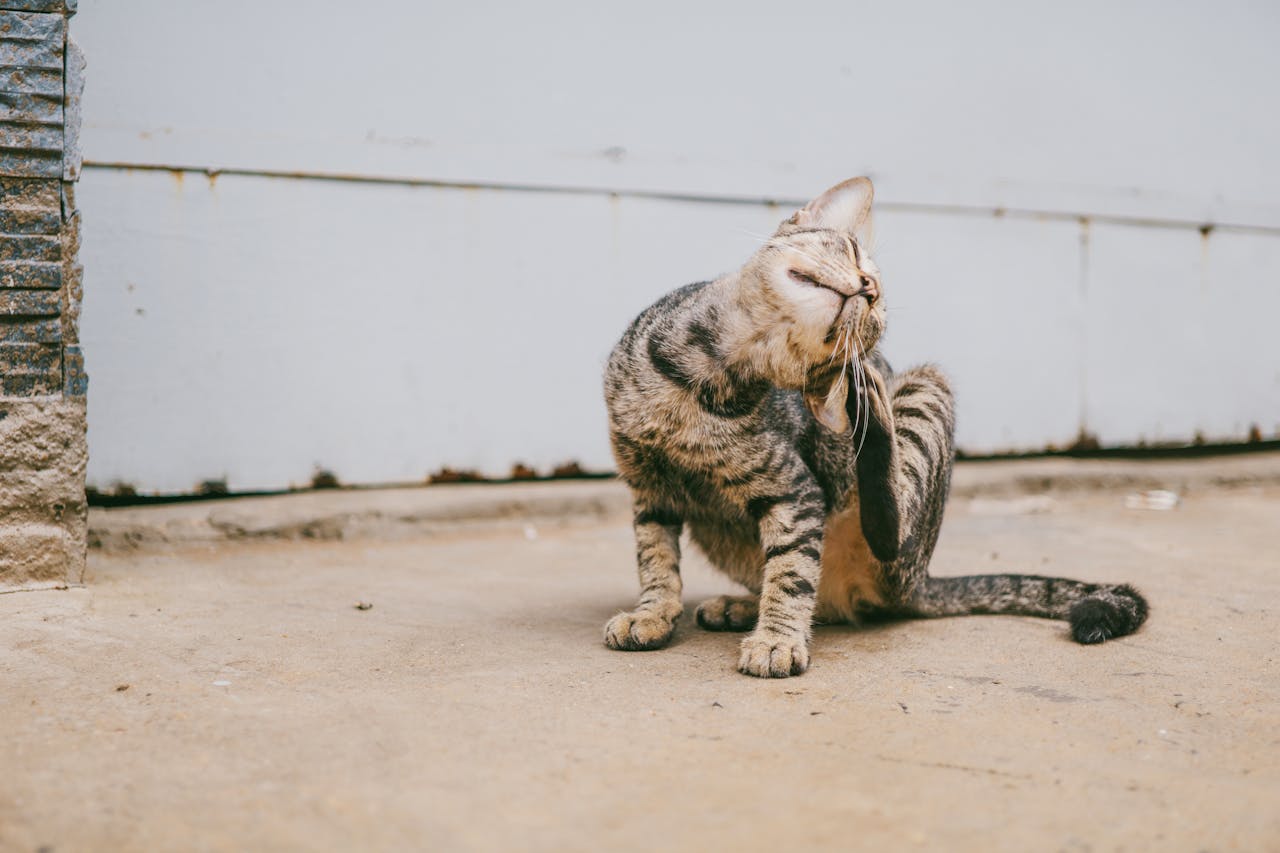Kittens undergo so many changes in their first two months of their lives! From being born blind and deaf to becoming playful and curious, they achieve an incredible number of physical and behavioral milestones that prepare them for adulthood. This article will discuss how kittens grow and learn in the first eight weeks and answer some of your common questions, such as “When do kittens open their eyes?” and “When do they learn to walk and eat solid food?”
How Kittens Develop Their Senses
One of the most noticeable changes in feline development is how their senses grow and evolve. Kittens are born with their eyes closed and their ear canals sealed; this protects them from bright lights and loud noises that could harm their delicate senses. They initially rely on their sense of smell and touch to find their mother and siblings and stay warm and safe.
When Do Kittens Open Their Eyes?
Observing how newborn cats develop and grow as they enter the world is fascinating. Did you know that kittens begin to open their eyes anywhere between 2–16 days of age, depending on the individual animal? This timeline may seem vague, but various factors depend on it:
- Breed: Because eyes develop differently depending on the breed, some cats, like Siamese, Persian, or Himalayan, quickly gain vision. Others, like Maine Coon, Ragdoll, or Norwegian Forest, take their time.
- Health: Strong, well-fed kittens open their eyes quicker than weak or hungry ones. Premature kitties may open theirs later. Those with eye problems or infections may have trouble opening them at all.
- Habitat: Baby cats in warm and well-lit areas tend to see sooner than those in colder or darker areas because light and heat assist in eye growth and functionality. Yet, excessive exposure to sunlight and heat can be damaging.
Although it can take up to two weeks for some cats to open their eyes, seeing things for the first time is gradual and natural. As curious pet parents, we mustn’t be tempted to force their eyelids open, as it could lead to damage or infection!
How the Eyes Develop Afterward
It’s interesting to mention that kittens can only see blurry shapes and movements to begin with. Plus, they are highly sensitive to bright lights for a while. But, as they grow older, vision gradually improves, and they start focusing on objects by around 4-5 weeks old.
As time passes, their eye color might also change from the initial blueish-gray shade to develop into their permanent adult color by six to eight weeks old. However, some breeds, such as Siamese and Himalayan cats, retain their blue eyes throughout their lives.
One of the most exciting things about waiting for kittens to open their eyes is seeing their color. Depending on their genes and coat color, their eye colors may differ: some may be blue, and some may be green or yellow. Sometimes, kittens have odd eyes (one blue and one green or yellow). The eye color of these adorable creatures can reveal a lot about their personality, health, and breed!
When Do Kittens Hear Sounds?
Around two to three weeks old, a baby cat’s ear canals open up, and they begin hearing sounds. Initially, they can only pick up on lower-pitched noises like their mother’s purring or heartbeat, but soon enough, they can make out higher-pitched sounds like meows or human voices.
Although their hearing doesn’t fully develop until around six weeks old, they begin to recognize and associate various sounds with different meanings early on. For instance:
- When they hear the sound of a can opener, they know that food is coming.
- When a doorbell buzzes, they know visitors have arrived.
Kittens’ ears are incredibly mobile, allowing them to pinpoint the source of a sound with great accuracy. Did you know their hearing is so sensitive that they can even hear sounds inaudible to humans?

How Kittens Learn to Walk
As kitties grow, they reach many milestones, and learning to walk is one of the most noteworthy. At birth, they have little muscle strength and coordination, making standing or walking independently impossible. But once they approach the two- to three-week mark, they start developing more muscle tone and balance, so it’s time to stand up and take those important first steps.
Although they may look wobbly and unsteady initially, their confidence and speed increase as they continue to practice walking, running, jumping, and climbing.
Interestingly, kittens learn to walk by imitating their mother and siblings and exploring their surroundings. During this process, they also practice motor skills by playing with objects, toys, and each other. Playing is essential for their physical, mental, and social development, and it helps them acquire the necessary skills to navigate their environment.
As a result, it becomes a priority to give baby cats a safe environment that stimulates and engages their curiosity. Doing this encourages them to explore!

How Kittens Learn to Eat Solid Food
One of the most meaningful developmental changes is the shift from nursing to consuming solid food.
The Nursing Stage
Because kittens are born toothless, they rely on their mother’s milk to meet their nutritional and immune system needs. They nurse several times a day until they are around four weeks old.
The Teething Stage
Around three to four weeks, they begin to develop their deciduous or milk teeth, which are small and pointed. They then become curious about solid food and may attempt to nibble on their mother’s or other cats’ food. At this stage, their sense of taste and smell kicks in, which helps them pick and choose preferred foods.
The Weaning Stage
The weaning process should be gradual and gentle. Wet food is an excellent place to start, as it is easier for kittens to consume and digest than dry kibble. It’s best to serve wet food in a shallow dish or plate, away from the mother’s bowl, so they understand it’s their own. Some babies may require encouragement to try new foods, such as placing some on their paws or mouths or mixing some with a milk replacer.

Introducing Dry Food
You can start feeding your kitten dry food such as Hill’s Science Diet Indoor Kitten formula (recommended) when they are around 3–4 weeks old, typically by mixing it with a little water or kitten formula to soften it. By 8 weeks old, most kittens can eat it dry.

Important Note!
Separating kittens too early can lead to stress, behavioral issues, and health problems. Yet it’s important to keep young kitties away from their mother or littermates once they are entirely weaned and can consume solid food independently; this usually happens around the age of 8 weeks, although that can vary depending on each animal’s development and readiness.
Summary of a Kitten’s Early Development
| Age | Weight | Senses | Skills |
|---|---|---|---|
| Birth to 1 week | 90-100 g (3 oz) | Eyes closed, ears folded, rely on smell and touch | Crawling or wiggling, nursing from mother or bottle-fed every 2 hours |
| 1 to 2 weeks | 150-275 g (5-10 oz) | Eyes begin to open (2-16 days), ears folded | Holding head up, taking first steps |
| 2 to 3 weeks | 250-400 g (8-14 oz) | Eyes fully open, ears begin to open and perk up | Walking, running, jumping, climbing, purring |
| 3 to 4 weeks | 300-450 g (10-16 oz) | Vision and hearing improving, sense of taste and smell developing | Playing with toys and littermates, using the litter box, trying solid food |
| 4 to 5 weeks | 350-500 g (12-18 oz) | Eye color changing, vision fully developed | Eating solid food, grooming themselves, exploring their surroundings |
| 5 to 6 weeks | 400-550 g (14-20 oz) | Hearing fully developed, able to locate sounds accurately | Hunting for prey, interacting with other cats and humans |
| 6 to 7 weeks | 450-600 g (16-22 oz) | Adult eye color developing | Developing personality and preferences, receiving first vaccination |
| 7 to 8 weeks | 500-650 g (18-24 oz) | All senses fully functional | Ready to be adopted and go to their forever homes |
The main milestones of kitten development in the first eight weeks.
Your Kitten’s Ongoing Development
After 8 weeks, baby cats enter a new stage of development, full of wonder and excitement, with their eyes wide open and their ears alert. During this stage, they continue to grow and learn new skills to shape their personality and behavior.
Improved Eyesight Means More Curiosity
One of the most noticeable changes after eight weeks of age is increased visual acuity and curiosity.
As they become more aware of their surroundings, a kitten’s eyesight improves to the point where they can see more colors, details, and distances. This newfound vision awakens their sense of adventure, and they start enthusiastically exploring their environment.
At this time, we can help our pets grow by providing them with a stimulating and safe space to play and by introducing them to other friendly cats and humans.
A Growing Desire to Groom and Hunt
Another significant change after eight weeks of age is the development of independence and grooming skills. Kittens start to take care of themselves by practicing their grooming techniques, such as licking their fur and cleaning their ears and eyes. They also become more adventurous and begin to hunt for prey, such as mice, birds, or insects.
Supporting Your Pet’s Growth
- Growing cats love to play with toys that resemble their natural prey, like feathers or balls, and we can keep them content by providing them with such toys.
- Gently brushing their fur with a soft brush or comb can also boost their well-being.
- We can also offer them items to scratch, climb, or chase to keep them active and in good shape.
- And, of course, a nutritious diet is compulsory for their growth and overall health!
Final Thoughts
Felines are known for their resilience and adaptability. They overcome many obstacles in their first few months of life! One of the most noticeable changes is when kittens open their eyes, which can happen anywhere between 2 to 16 days of age. By learning how they grow and learn in their first eight weeks, you can provide the finest care and support to help them become healthy, happy, and well-adjusted cats.
Whether you’re a new kitten parent or have been one for a while, you have the power to make a positive impact on your pet’s life. You’ll help them thrive and learn valuable lessons about curiosity, playfulness, and affection by offering the love and care they need. Kittens make for intelligent and loyal companions, and their cute and cuddly appearance is just the tip of the iceberg.
What will you name your kitten? Check out our directory of thousands of cat names, according to their colors and personalities!
Sources and Further Reading
- Kitten Care Week by Week (Weeks 1 to 8): Our Vet Explains | Cat-World
Kitten development week by week. An in depth look at kitten development from birth to eight weeks including photos of each week, growth and milestones. - When Do Newborn Kittens Open Their Eyes? | Concord Vets
Today, our Concord vets give you some information about when newborn kittens open their eyes and other tips about their early development. - Developmental Stages of Kitten Behavior | Seattle Humane
Cats with good social skills are more likely to have kittens with good social skills. Learn how kittens “feed” on their mothers’ fear or reservations around other people. - When do Kittens Open Their Eyes? | Veterinarians.org
This article talks about the kitten’s eyes and answers when do kittens open their eyes.




